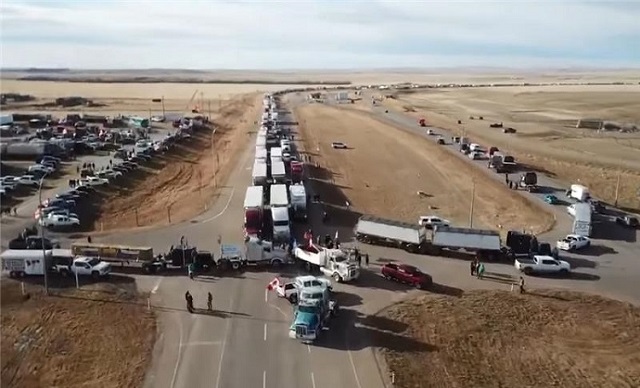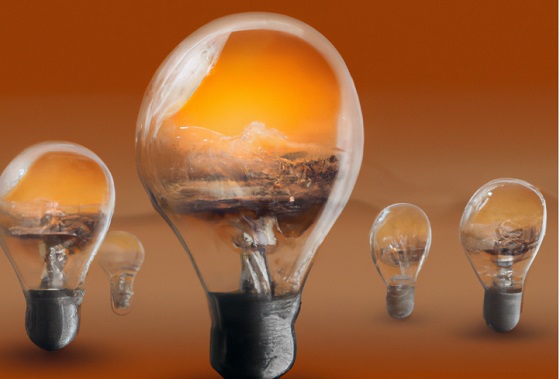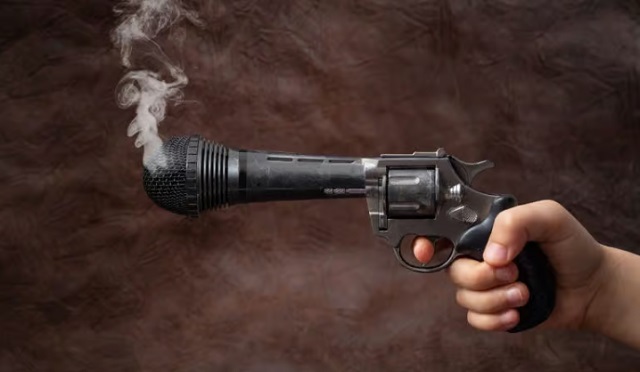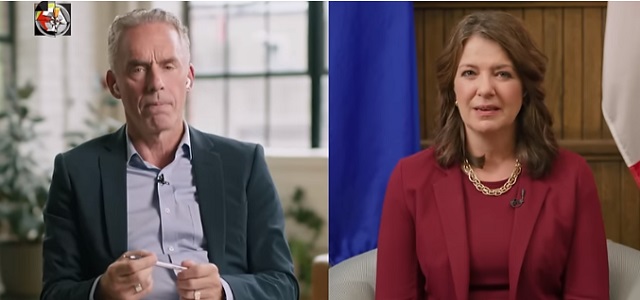Alberta
Petrified Buffalo Hearts, Indian Maiden Breasts, Stalagmites and 70 Million Year Old Worm Poop

I recently attended the Lieutenant Governor of Alberta Distinguished Artist Awards in Maskwacis, Alberta. I was fortunate to meet Dr. Russ Schnell. He is the Deputy Director of the National Oceanic and Atmospheric Administration, Global Monitoring Division, in the United States. He grew up in the Battle River region and shared a fascinating story about discovering 70 million year old “Rosselia Worm Fossils” in 1958 in the bed of Castor Creek at the confluence of the Battle River.
Dr. Schnell was kind enough to allow me to publish a story he had written some years ago. I shot the video of Dr. Schnell as he was telling the story of how the fossils were formed.
The following story is adapted from the book “Stories from Life: Beauty Everyday As It happens”, 2016, Jane Ross ed., ISBN:978-0-9695841-2-4, Friesens Books, Altona, Manitoba, 325 pages (for a copy contact: Jane Ross <[email protected]>).
____________________________________________________________________
Petrified Buffalo Hearts, Indian Maiden Breasts, Stalagmites and 70 Million Year Old Worm Poop
By Dr. Russ Schnell, B.Sc., Ph.D., Dr.Sci. (Hons).
It was a Saturday in August 1958. The summer day was hot up on the open prairie in east-central Alberta. The air was much cooler in the narrow valley, especially in the shadows. And most of the valley was in shadows from trees growing on the rims above the sandstone cliffs.
The rock was stored in my parent’s garage for 50 years until I brought it to Colorado, USA, where I now live.
About 1:00 PM, the noon wiener roast was over and we had waited the obligatory one hour after eating before going swimming. Everyone knew that you would get cramps and drown otherwise! No matter that the water was only 4 feet deep at the deepest, and then only behind the beaver dams. And that the water was to cold to do much other than dip a few times, dog paddle for 10 feet, then shout out that it was “cold enough to freeze the balls off a brass monkey”1 and splash to shore and stand around a smoky campfire of poplar branches. It was too early in the day for mosquitoes, and even if they had been out, the eye-burning smoke would have kept them away from our tender, lily white bodies. Only our faces, necks and arms were tanned from spending every possible hour outside playing, hiking, swimming and riding bikes over the 20 square mile area of grasslands and creek valleys we considered our “territory”.
On this day, walking in the water bare footed on the bedrock, we would occasionally feel smooth, rounded, tapered stones under the water. We recovered some of these “stones” which were very heavy for their size and that appeared to be composed of iron. At least they looked the colour of rusted iron!
No one seemed too concerned that the sparks from the fire could ignite the surrounding dry grass and possibly spread for miles. Hey, we were six 9-12 years old boys, friends since toddlers, invincible, girls yet to be discovered, having another boy’s day out along the creek, 2 miles from Castor town. We stood naked, dripping and shivering, occasionally stirring the fire back to life to keep warm while roasting (flaming) marshmallows on slender willow switches we had cut and peeled earlier on which to roast the wieners.
1. “Cold enough to freeze the balls off a brass monkey” is possibly an old naval saying. A monkey was a brass plate with holes in which iron cannon balls were stacked. When it got very cold the brass would contract more than the iron cannon balls and therefore the balls would pop out and roll off the brass monkey! Of course we did not know that then. We had heard older boys make the “brass monkey” statement when they were around girls who would giggle, so we thought it was “big” to talk like that.
Before roasting the wieners, we had played “stretch”, a game where two boys stand facing each other then throw a hunting knife to stick no more than 2 inches to the side of an opponent’s bare foot. If the knife stuck in the ground and was not more than the allowed 2 inches away, the recipient of the thrown knife moved his foot to touch the blade and then took a turn throwing his hunting knife to stick near the foot of the first thrower. The game ended when one person’s legs could no longer stretch further apart, and that person was declared the loser. There were always losers, never winners! All boys carried hunting knives in hip scabbards that summer. It was the thing to do.
A more imaginative member of the group said they felt like fossil Indian maiden breasts.
Now, to a pivotal juncture in this story. One reason we played in this particular part of the valley was that the creek had cut through to bedrock making it easy to cross on a solid rock footing. In most other stretches of the creek, the bottom was soft mud into which you would sink up to your knees or deeper. On this day, walking in the water bare footed on the bedrock, we would occasionally feel smooth, rounded, tapered stones under the water. We recovered some of these “stones” which were very heavy for their size and that appeared to be composed of iron. At least they looked the colour of rusted iron! They were conical in shape and every one had a well formed, round indentation on the apex. On the broad end there was generally (but not always) a finger size hole near the centre. The stones varied in size from a large potato to a small watermelon.
Since we found the heart shaped rocks at the base of a cliff we “knew” was an Indian buffalo jump, some of us thought they were petrified buffalo hearts. Supporting this supposition was the fact that one of the group had found a black, perfectly shaped, sharp, fluted arrowhead near the creek on a sandy path worn by deer coming down the valley wall to cross the creek. A more imaginative member of the group said they felt like fossil Indian maiden breasts, not that any of us could confirm how a maiden’s breast felt. One such “petrified buffalo heart”, presented upside down, is shown below.

This “petrified buffalo heart” is 8 inches tall and weighs 8 pounds. It appears to be made of iron but is not magnetic. These fossils wash out of 70 million year old seashore sediments and settle onto bedrock in a small creek in east-central Alberta. Photo by Ed Ries, Castor, Alberta, 2009.
I took one of the “buffalo hearts” home in my backpack wondering, occasionally, over the hour hike back to town, why I was carrying a rock that was so heavy. The rock was stored in my parent’s garage for 50 years until I brought it to Colorado, USA, where I now live.
But, I digress from the timeline. On the hike back to town our ragtag group diverted to look at the body of a dead cow lying in a pasture. We had discovered it a few days earlier and were interested in looking at it again. On the discovery visit, the cow must have been dead for only a few days. It was bloated like an overextended balloon, there were flies buzzing around the mouth, eyes and anus, but otherwise the cow was as if sleeping on its side like a horse. On this second visit, the carcass was less bloated, but to our great surprise had been completely hollowed out from the rear.
There were no intestines, no lungs, no heart, no stomach, no blood. The interior cavity was dry as dust, the hide was intact and the “roasts” were still on the thighs. We surmised that coyotes had devoured the soft insides by chewing from the butt end into the body cavity.
Within a few minutes, he printed out a copy of a scientific paper on ancient marine worms that made burrows in the seafloor and left imprints of their existence.
Before leaving the carcass we convinced, cajoled or otherwise enticed the youngest boy, who wanted to be part of the “big boys” group, to play “coyote” and crawl into the interior of the cow. He did so to our great amusement as we beat on the hide covered ribs stretched taut like a large reddish drum. When we returned to the carcass a week or so later, it was picked apart and remnants were being pecked at by magpies. What meat remained was a seething mass of white maggots.
Fast forward 50 years to 2008. By this time I knew that the conical rock was not a petrified buffalo heart or a maiden’s breast. I was a slow learner! I was now convinced though that the rock was a stalagmite formed by iron rich water that had dripped onto a cave floor over thousands of years. I looked on the Internet for similar stalagmites, but did not find any. Still, sure of my analysis, I wrote a letter to the director of the Royal Tyrrell Museum, Drumheller, Alberta enclosing photos, and described where these “stalagmites” were found and asking how old they were. I wrote the letter on heavy, expensive looking stationary with an official U.S. government letterhead festooned with gold embossed logos, and signed with a number of titles. I figured that might get his attention and a response.
A few weeks later I received an email thanking me for the letter and photos, and suggesting that the “stalagmite” was possibly a random iron accretion. Although not a paleontologist or geologist, I still believed that this rock was made by a deliberate, not random process. After further correspondence, Dr. David Eberth, Senior Research Scientist, Royal Tyrrell Museum, agreed to meet in Castor, Alberta in late June, 2009, and to come to the valley to look at what I still believed were stalagmites. I flew up from Colorado and David, myself, a sister and 5 friends from Castor proceeded out to the valley now owned by another friend from toddler days. He took us to an area of the creek where there were many of the “stalagmites” and we each collected a few specimens. David asked to see an exposed cliff so he could possibly find some of these iron rocks embedded in their natural habitat. Gary Dunkle, the land owner, duly took us to such an embankment and David found a few of the conical rocks imbedded in a loose, grey, alkaline soil in an exposed cliff face.
Then he told us that a world authority on such creatures was Professor Murray Gingras ’95 B.Sc., ’99 Ph.D., Department of Earth and Atmospheric Science, University of Alberta.
To my great surprise, the “stalagmites” were oriented conical point down in the cliff face. This is not how stalagmites form! David now lost some of his prior cool composure, as he convinced me that my earlier conjectures were incorrect, that we were looking at a 70 million year old seashore deposit, and these iron accretions had probably once been made by something related to the seashore.
In a humorous throwback to events 50 years earlier, one of the fossils that David had excavated became dislodged and rolled down the steep cliff splashing into the creek behind a beaver dam. We convinced Eric Neilson ’88, B.Sc. Agriculture and ’09, B.Ed. and now a local school teacher, to wade into the water and retrieve the fossil. The water was over four feet deep and Eric had to fully submerge to finally locate and recover the fossil that was embedded in silt. There was no fire to get warm and dry beside this time!
We returned to the insurance and real-estate offices of Dale Emmett, one of the members on this current expedition, where David used a computer to begin looking up something called “Rosselia” on the Internet. Within a few minutes, he printed out a copy of a scientific paper on ancient marine worms that made burrows in the seafloor and left imprints of their existence. Then he told us that a world authority on such creatures was Professor Murray Gingras ’95 B.Sc., ’99 Ph.D., Department of Earth and Atmospheric Science, University of Alberta. Small world!
We departed the office in triumph and sojourned to a nearby bar where Ed Ries, a local rancher and another member of the days’ expedition, bought us a round of beer to toast our success. While at the bar, Brenda Scott ’73, B.Ed. (sister, also on the excursion) brought out some perfectly preserved fossil snails that she had collected the day prior in a nearby fossil bed. David was quite interested, as these were fresh water snails that rarely fossilize into such perfect iron accretions. He wanted to know where they are found, but we declined to tell him as only a few members of our family know the location, and we do not want the location to be picked over. Someday we might show him, but that will be another story.
So how did worms living in the sediment in a 70 million old marine seashore make 8 pound “petrified buffalo hearts?” First, the worm is not like the garden variety earthworm one finds digging in Alberta garden soil. Instead it was thought be an elongated creature (let us say about one foot long) living vertically in seabed sediment with tentacles that could spread out over the seafloor to capture small organic particle or small creatures touching the tentacles. A stylized depiction of the worm and its burrow is shown below.

Rosselia worms lived in a burrow at the bottom of ancient marine seashores and captured food with tentacles spread around the entrance to the hole. They packed their poop into a bulbous structure within the hole. Eventually the organic material in the poop was replaced with dissolved iron producing the conical imprint shown above. (Drawing adapted from Masakazu Nara, Rosselia socialis: a dwelling structure of a probable terebellid polychaete, Lethaia, vol. 28, pp.171-178, 1995.)
The fossilized worm burrow lay at the bottom of the ocean for eons becoming covered by many feet of sediment.
The worm would slide down into its burrow to digest its meals, to poop and to get away from predators. To accommodate the poop, it would push out the sides of its vertical tube home which was probably easy to do as it was living is soft sediment. Eventually the worm would die or move on to a new home leaving the organic evidence of its existence within its seabed home.
Now for the rare events that produced the “petrified buffalo hearts” and exposed them for observation today. At some point 70 million years ago, the organic-rich waste in the worm hole was brought into sustained contact with a freshwater stream carrying dissolved iron compounds. This iron slowly fossilized the poop and food detritus. The fossilized worm burrow lay at the bottom of the ocean for eons becoming covered by many feet of sediment.
Eventually the land rose and the fossils were exposed by the Castor Creek that eroded through an uplifted area of the former beach. Some of the exposed fossils settled on bedrock where they are found today. Others are still slowly sinking in the muck at the bottom of the creek.

70 million year old fossilized poo from a Rosselia worm found in the Castor Creek near the confluence with the Battle River, September 18, 2019.
The Castor Rosselia fossils are rather rare in that they are well formed, well preserved iron accretions, and in the words of Dr. Gingras in an email to Dr. Eberth and copied to me, he states: “Rosselia are normally much smaller than the cannon-balls you show”.
And so we come full circle in a small valley in East-Central Alberta; cannon-balls to cannon-balls.

Dr, Russ Schnell
Dr. Russ Schnell, Deputy Director, NOAA, Global Monitoring Division, Boulder, CO
Russ was born and raised in Alberta, Canada and educated at the Universities of Alberta; Newfoundland; Hawaii; Wales; Wyoming and Colorado. He holds degrees in Biology, Chemistry, Atmospheric Resources and Atmospheric Science.
Dr. Schnell discovered biological ice nuclei in 1970 now used in ski hill snowmaking worldwide, and by their removal on plants, prevention of frost damage to -3C. These nuclei are important in precipitation formation with papers from around the globe now being published on the topic.
His research, as Director of the Arctic Gas and Aerosol project in the 1980s, established that Arctic Haze was air pollution from Eastern Europe. For 7 years he was director of the Mauna Loa Observatory, Hawaii, where the steady global increase in carbon dioxide that forms the backbone of the greenhouse gas atmospheric warming, was established.
He has conducted research on ozone destruction in the Arctic and Antarctic, ozone production from fossil fuel production and on the changing chemical composition of the atmosphere driving climate change.
He has published 125 scientific papers, nine of them in Nature, a premier scientific journal, and holds patents in plant science and biochemistry.
Russ has lived, traveled or worked in 92 countries, and on every continent including the North and South Poles.
In 2002, he received the NOAA Administrator’s Award for his work as director of the Mauna Loa Observatory.
In 2007, Dr. Schnell was recognized as one of the co-recipients of the Nobel Peace Prize as a member of the Intergovernmental Panel on Climate Change (IPCC).
In 2008, he was awarded the U.S. Department of Commerce Silver Medal the highest honorary recognition the Department bestows and in 2011 both the NOAA Distinguished Career and the NOAA OAR Outstanding Science Communicator Awards.
Dr. Schnell’s non-work interests include building wooden trains for children, “Little Free Libraries” for donation and real-estate investing.
He grew up near the Battle River in East Central Alberta. I met him while attending the Lieutenant Governor of Alberta Distinguished Artist Awards held in Maskwacis, AB on September 21, 2019.
Alberta
Alberta awash in corporate welfare

From the Fraser Institute
By Matthew Lau
To understand Ottawa’s negative impact on Alberta’s economy and living standards, juxtapose two recent pieces of data.
First, in July the Trudeau government made three separate “economic development” spending announcements in Alberta, totalling more than $80 million and affecting 37 different projects related to the “green economy,” clean technology and agriculture. And second, as noted in a new essay by Fraser Institute senior fellow Kenneth Green, inflation-adjusted business investment (excluding residential structures) in Canada’s extraction sector (mining, quarrying, oil and gas) fell 51.2 per cent from 2014 to 2022.
The productivity gains that raise living standards and improve economic conditions rely on business investment. But business investment in Canada has declined over the past decade and total economic growth per person (inflation-adjusted) from Q3-2015 through to Q1-2024 has been less than 1 per cent versus robust growth of nearly 16 per cent in the United States over the same period.
For Canada’s extraction sector, as Green documents, federal policies—new fuel regulations, extended review processes on major infrastructure projects, an effective ban on oil shipments on British Columbia’s northern coast, a hard greenhouse gas emissions cap targeting oil and gas, and other regulatory initiatives—are largely to blame for the massive decline in investment.
Meanwhile, as Ottawa impedes private investment, its latest bundle of economic development announcements underscores its strategy to have government take the lead in allocating economic resources, whether for infrastructure and public institutions or for corporate welfare to private companies.
Consider these federally-subsidized projects.
A gas cloud imaging company received $4.1 million from taxpayers to expand marketing, operations and product development. The Battery Metals Association of Canada received $850,000 to “support growth of the battery metals sector in Western Canada by enhancing collaboration and education stakeholders.” A food manufacturer in Lethbridge received $5.2 million to increase production of plant-based protein products. Ermineskin Cree Nation received nearly $400,000 for a feasibility study for a new solar farm. The Town of Coronation received almost $900,000 to renovate and retrofit two buildings into a business incubator. The Petroleum Technology Alliance Canada received $400,000 for marketing and other support to help boost clean technology product exports. And so on.
When the Trudeau government announced all this corporate welfare and spending, it naturally claimed it create economic growth and good jobs. But corporate welfare doesn’t create growth and good jobs, it only directs resources (including labour) to subsidized sectors and businesses and away from sectors and businesses that must be more heavily taxed to support the subsidies. The effect of government initiatives that reduce private investment and replace it with government spending is a net economic loss.
As 20th-century business and economics journalist Henry Hazlitt put it, the case for government directing investment (instead of the private sector) relies on politicians and bureaucrats—who did not earn the money and to whom the money does not belong—investing that money wisely and with almost perfect foresight. Of course, that’s preposterous.
Alas, this replacement of private-sector investment with public spending is happening not only in Alberta but across Canada today due to the Trudeau government’s fiscal policies. Lower productivity and lower living standards, the data show, are the unhappy results.
Author:
Alberta
‘Fireworks’ As Defence Opens Case In Coutts Two Trial

From the Frontier Centre for Public Policy
By Ray McGinnis
Anthony Olienick and Chris Carbert are on trial for conspiracy to commit murder and firearms charges in relation to the Coutts Blockade into mid-February 2022. In opening her case before a Lethbridge, AB, jury on July 11, Olienick’s lawyer, Marilyn Burns stated “This is a political, criminal trial that is un Canadian.” She told the jury, “You will be shocked, and at the very least, disappointed with how Canada’s own RCMP conducted themselves during and after the Coutts protest,” as she summarized officers’ testimony during presentation of the Crown’s case. Burns also contended that “the conduct of Alberta’s provincial government and Canada’s federal government are entwined with the RCMP.” The arrests of the Coutts Four on the night of February 13 and noon hour of February 14, were key events in a decision by the Clerk of the Privy Council, Janice Charette, and the National Security Advisor to the Prime Minister, Jody Thomas, to advise Prime Minister Justin Trudeau to invoke the Emergencies Act. Chief Justice Paul Rouleau, in submitting his Public Order Emergency Commission Report to Parliament on February 17, 2023, also cited events at the Coutts Blockade as key to his conclusion that the government was justified in invoking the Emergencies Act.
Justice David Labrenz cautioned attorney Burns regarding her language, after Crown prosecutor Stephen Johnson objected to some of the language in the opening statement of Olienick’s counsel. Futher discussion about the appropriateness of attorney Burns’ statement to the jury is behind a publication ban, as discussions occurred without the jury present.
Justice Labrenz told the jury on July 12, “I would remind you that the presumption of innocence means that both the accused are cloaked with that presumption, unless the Crown proves beyond a reasonable doubt the essential elements of the charge(s).” He further clarified what should result if the jurors were uncertain about which narrative to believe: the account by the Crown, or the account from the accused lawyers. Labrenz stated that such ambivalence must lead to an acquittal; As such a degree of uncertainty regarding which case to trust in does not meet the “beyond a reasonable doubt” threshold for a conviction.”
On July 15, 2024, a Lethbridge jury heard evidence from a former employer of Olienicks’ named Brian Lambert. He stated that he had tasked Olienick run his sandstone quarry and mining business. He was a business partner with Olienick. In that capacity, Olienick made use of what Lambert referred to as “little firecrackers,” to quarry the sandstone and reduce it in size. Reducing the size of the stone renders it manageable to get refined and repurposed so it could be sold to buyers of stone for other uses (building construction, patio stones, etc.) Lambert explained that the “firecrackers” were “explosive devices” packaged within tubing and pipes that could also be used for plumbing. He detailed how “You make them out of ordinary plumbing pipe and use some kind of propellant like shotgun powder…” Lambert explained that the length of the pipe “…depended on how big a hole or how large a piece of stone you were going to crack. The one I saw was about six inches long … maybe an inch in diameter.”
One of Olienick’s charges is “unlawful possession of an explosive device for a dangerous purpose.” The principal evidence offered up by RCMP to the Crown is what the officers depicted as “pipe bombs” which they obtained at the residence of Anthony Olienick in Claresholm, Alberta, about a two-hour drive from Coutts. Officers entered his home after he was arrested the night of February 13, 2022. Lambert’s testimony offers a plausible common use for the “firecrackers” the RCMP referred to as “pipe bombs.” Lambert added, these “firecrackers” have a firecracker fuse, and in the world of “explosive” they are “no big deal.”
Fellow accused, Chris Carbert, is does not face the additional charge of unlawful possession of explosives for a dangerous purpose. This is the first full week of the case for the defence. The trial began on June 6 when the Crown began presenting its case.
Ray McGinnis is a Senior Fellow with the Frontier Centre for Public Policy who recently attended several days of testimony at the Coutts Two trial.
-

 Frontier Centre for Public Policy2 days ago
Frontier Centre for Public Policy2 days agoCowering before carbon
-

 International17 hours ago
International17 hours agoSecret Service Repeatedly Rejected Offers To Use Drones At Deadly Trump Rally, Whistleblower Says
-

 Alberta1 day ago
Alberta1 day ago‘Fireworks’ As Defence Opens Case In Coutts Two Trial
-

 Business1 day ago
Business1 day agoEstonia’s solution to Canada’s stagnating economic growth
-

 International17 hours ago
International17 hours agoHouse Passes Bipartisan Resolution Establishing Trump Assassination Attempt Task Force
-

 Bruce Dowbiggin10 hours ago
Bruce Dowbiggin10 hours agoGarbage In, Garbage Out: The Democrats 2024 Election Coup
-

 COVID-191 day ago
COVID-191 day agoLeaked documents: German gov’t lied about shots preventing COVID, knew lockdowns did more harm than good
-

 Business1 day ago
Business1 day agoFederal government seems committed to killing investment in Canada










